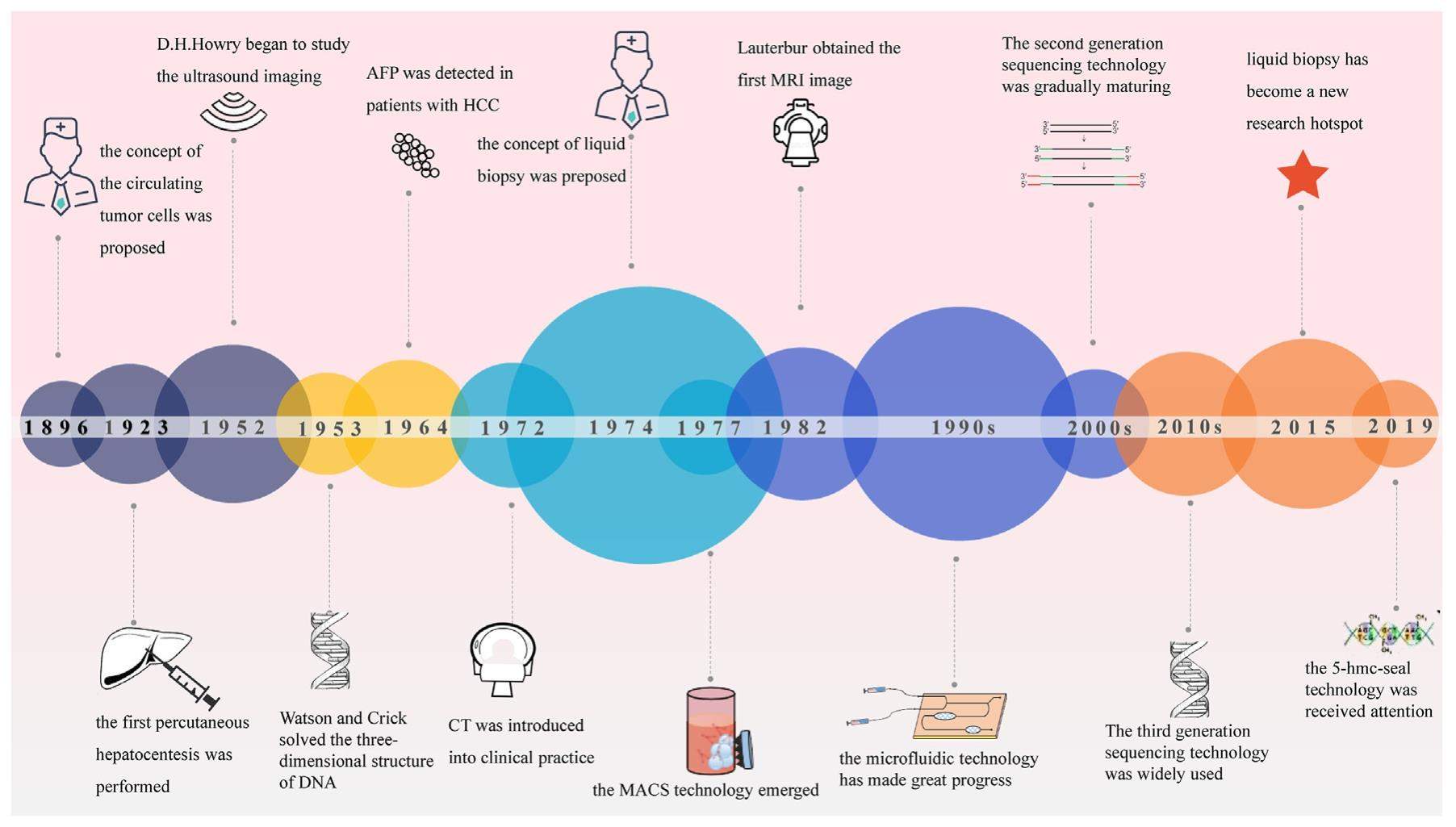
Application and progress of the detection technologies in hepatocellular carcinoma


Hepatocellular carcinoma (HCC) has a very high incidence and fatality rate, and in most cases, it is already at an advanced stage when diagnosed. Therefore, early prevention and detection of HCC are two of the most effective strategies. However, the methods recommended in the practice guidelines for the detection of HCC cannot guarantee high sensitivity and specificity except for the liver biopsy, which is known as the "gold standard". In this review, we divided the detection of HCC into pre-treatment diagnosis and post-treatment monitoring, and found that in addition to the traditional imaging detection and liver biopsy, alpha fetoprotein (AFP), lens culinaris-agglutinin-reactive fraction of AFP (AFP-L3), protein induced by vitamin K absence or antagonist-II (PIVKA-II) and other biomarkers are excellent biomarkers for HCC, especially when they are combined together. Most notably, the emerging liquid biopsy shows great promise in detecting HCC. In addition, lactic dehydrogenase (LDH), suppressor of cytokine signaling (SOCS) and other relevant biomarkers may become promising biomarkers for HCC post-treatment monitoring. Through the detailed introduction of the diagnostic technology of HCC, we can have a detailed understanding of its development process and then obtain some enlightenment from the diagnosis, to improve the diagnostic rate of HCC and reduce its mortality.
